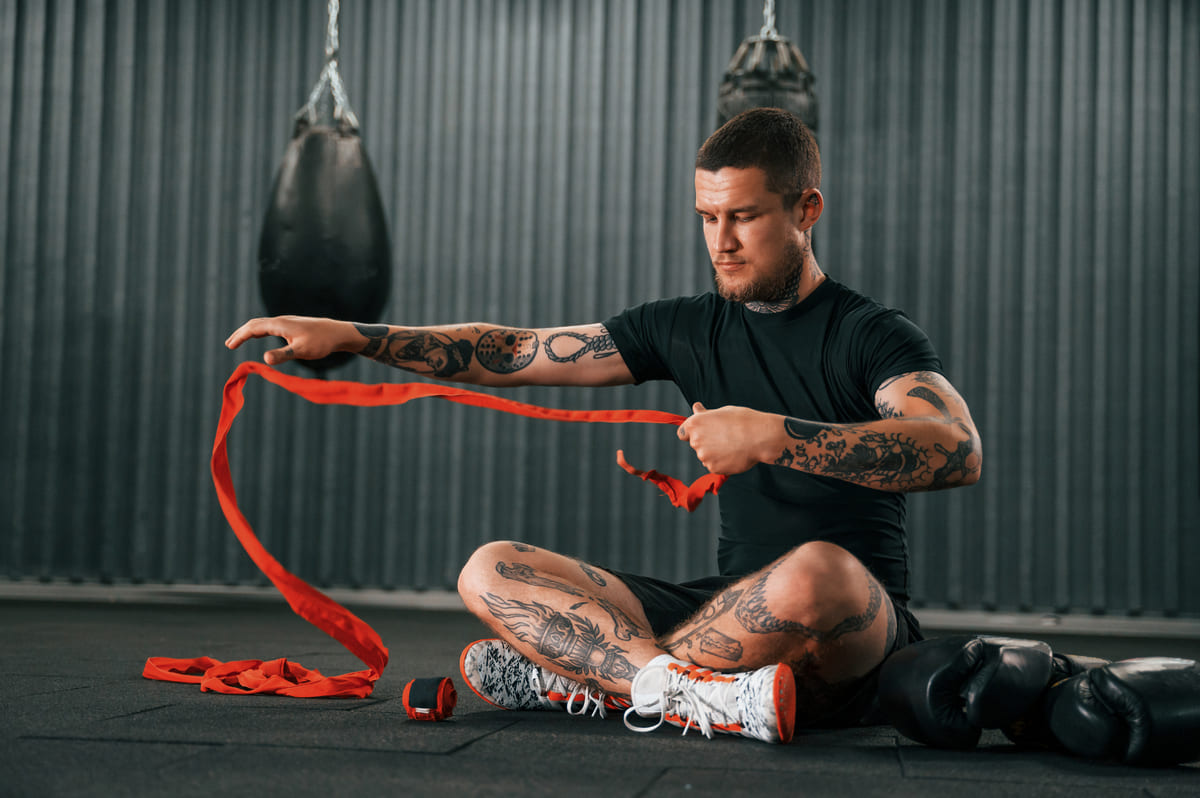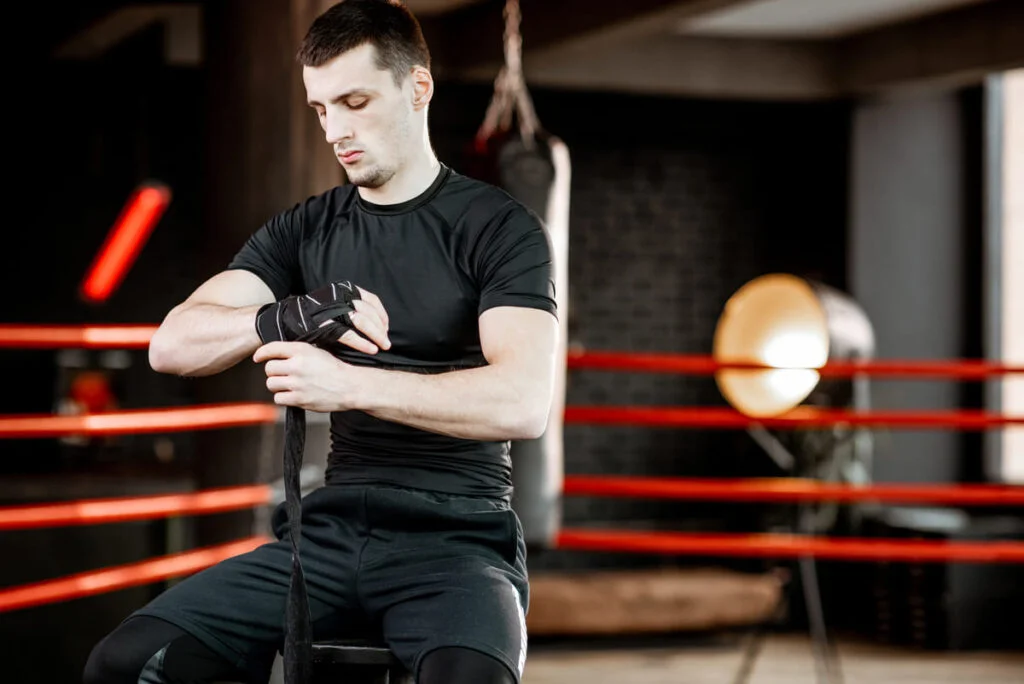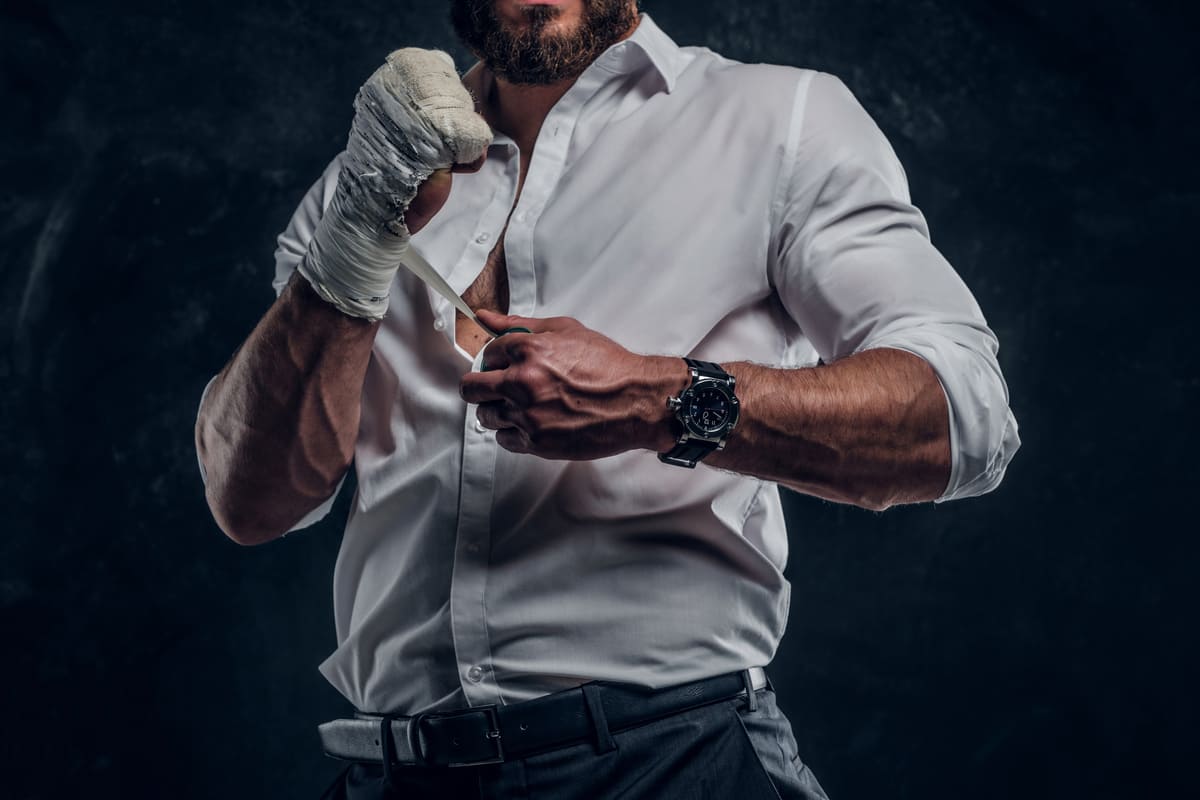Boxing wraps are more than just strips of cloth; they are an essential part of a boxer’s gear. Designed to protect and support the hands and wrists, these wraps are the unsung heroes of the boxing world. They serve as the first line of defense against injuries, ensuring that your hands are in fighting shape, round after round.
Why Are Boxing Wraps Necessary?
Boxing wraps serve multiple purposes, each contributing to your performance and safety in the ring:
-
Protection: Your hands are made up of fragile joints and delicate bones that could easily break from the impact of repeated punches. Boxing wraps hold your hand together, providing a layer of protection for your fingers, knuckles, and wrists.
-
Support: The wraps help in fastening all your joints together, ensuring that the shock from your punches is better distributed across your entire hand. This prevents your joints from moving independently and freely, reducing the risk of fractures or sprains.
-
Performance: Properly wrapped hands can significantly improve your punching technique. The added support allows you to throw punches with more force and accuracy, giving you an edge in both training and competitive bouts.
The Anatomy of a Boxing Wrap
Boxing wraps are typically made from a blend of cotton, polyester, and elastic materials, allowing for a snug yet comfortable fit. They come in various lengths, usually ranging from 108 to 210 inches, to accommodate different hand sizes and wrapping techniques. The wraps often feature a loop for the thumb and a Velcro closure for secure fastening.
Now that you know what boxing wraps are and why they’re indispensable, let’s explore the different types available and how to choose the right one for you.
Types of Boxing Wraps

When it comes to boxing wraps, one size doesn’t fit all. In fact, the types of wraps you choose can significantly impact your boxing experience. Let’s break down the different types of boxing wraps and their specific uses.
Professional vs. Training Wraps
Professional wraps and training wraps serve the same fundamental purpose—protecting your hands—but they differ in material and application.
- Professional Wraps: These are most commonly seen in official fights and are often applied by a trainer or cornerman. They usually consist of layers of tape and thin gauze, providing maximum support and protection.
- Training Wraps: These are the wraps you’ll most likely use for everyday training. They are easier to put on by yourself and come in either stretchy or non-stretchy material.
Material and Fit
The material of the wrap can also influence its effectiveness and comfort. Here are the two main types:
- Stretchy (Elastic): These wraps offer a bit of stretch, allowing them to fit the hand tighter and form to the shape of the hand more closely. They are generally made from a blend of cotton and synthetic materials like polyester and spandex.
- Non-Stretchy (Traditional): Made from thicker material like cotton, these wraps fit slightly differently without the risk of being too tight. They are often considered more durable but may not offer the same level of snugness.
Checkout our article about what type of Hand wraps boxers use
Length and Width
The length of the wrap you need can vary based on your hand size and the wrapping technique you use. Here’s a quick guide:
- Short (108 to 120 inches): Suitable for smaller hands or for those who prefer less padding.
- Medium (150 to 170 inches): A versatile option for most adult hands.
- Long (180 to 210 inches): Ideal for larger hands or for those who prefer extra padding and support.
Choosing the right type of boxing wrap is crucial for both your performance and safety. Whether you’re a professional boxer or just getting started, understanding these options will help you make an informed decision.
How to Properly Wrap Your Hands
Wrapping your hands is not just a pre-fight ritual; it’s an art form that requires attention to detail. A well-wrapped hand can be the difference between a powerful punch and a painful injury. Let’s walk through the step-by-step process of achieving that perfect wrap.
Step 1: Preparing the Wrap
Start by unrolling your wrap and locating the thumb loop. Insert your thumb through this loop, ensuring that the wrap lies flat against your wrist. This is the foundation of your wrap, so make sure it’s secure but not too tight.
Step 2: Wrapping the Wrist
With the thumb loop in place, begin wrapping the cloth around your wrist. Aim for about three wraps, checking each time to ensure it’s snug but not cutting off circulation. The wrist wrap provides the initial layer of support and protection for your hand.
Step 3: Covering the Knuckles
After securing the wrist, move on to the knuckles. Wrap the cloth over the back of your hand and across the knuckles, making sure to keep your fingers spread apart. This allows for better flexibility and movement. Loop the wrap around your knuckles 2-3 times, depending on your comfort and the length of the wrap.
Pro Tips for Hand Wrapping

Achieving the perfect wrap is an art that comes with practice, but here are some insider tips to get you started on the right foot—or should we say, the right hand?
-
Figure-Eight Technique: Think of the wrap as creating a figure-eight pattern around your wrist and knuckles. This ensures even distribution of support.
-
Check for Snugness: Every few wraps, open and close your hand to make sure it’s not too tight. You should be able to move your hand comfortably.
-
Secure with Velcro: Most wraps come with a Velcro closure. Make sure to fasten this securely, so your wrap stays in place during your training or fight.
Mastering the art of hand wrapping is crucial for any boxer, whether you’re a seasoned pro or a beginner.
Frequently Asked Questions
Boxing wraps may seem straightforward, but they often raise a lot of questions, especially for those new to the sport. Let’s dive into some of the most frequently asked questions about boxing wraps.
When Should I Wear Boxing Wraps?
Boxing wraps should be worn whenever you're training or participating in a boxing match. This includes sparring sessions, hitting the heavy bag, and even during shadow boxing. The idea is to make wearing wraps a habit, so you're always protecting your hands.
What Length Should the Right Size Hand Wrap Be?
The length of your boxing wrap will depend on the size of your hands and your wrapping technique. As a general rule, shorter wraps (108 to 120 inches) are suitable for smaller hands or less padding. Medium wraps (150 to 170 inches) work well for most adult hands, while longer wraps (180 to 210 inches) are ideal for larger hands or extra padding.
How Do You Properly Clean Your Boxing Wraps?
Hygiene is crucial when it comes to boxing gear. After each training session, it's advisable to wash your boxing wraps. You can throw them in the washing machine inside a garment bag to prevent tangling. Air-drying is usually the best method to maintain the elasticity and shape of the wraps.
Pro Tip for Cleaning
Never use wet or damp wraps for your training sessions. Not only is it uncomfortable, but it’s also a breeding ground for bacteria. Always ensure your wraps are completely dry before using them again.
Conclusion
And there you have it, a comprehensive guide to boxing wraps—your first line of defense in the ring. From understanding what boxing wraps are to exploring the different types available, we’ve covered the essentials that every boxer, amateur or pro, should know. We’ve also delved into the art of hand wrapping and tackled some of the most frequently asked questions to ensure you’re well-equipped for your next bout.
Remember, your hands are your most valuable asset in boxing. Protecting them with the right type of wrap, applied correctly, can make all the difference in your performance and longevity in the sport. So, keep those hands wrapped, your stance ready, and may your punches always land true.

